
Cromática
Curator
DETALLES DEL PROYECTO
Cromática (Chromatic) is a project that consists of a series of works that start from the idea of the synesthesia to establish different relationships and organizational models of sensory associations.
The rescue of traditions is a great vehicle for the preservation of memory, and therefore the Ancestral crafts such as textiles or ceramics are present in the project.
They are especially three colors that act as the conceptual epicenter of Cromática which refers to the three great kingdoms of nature: the animal, from the grana cochinilla (cochineal grana), the vegetal kingdom of the blue indigo and the mineral pigments that are used for the realization of yellow.
These three axes deploy a whole range of disciplines from connection bridges that establish correspondences between technology, understanding, and knowledge. The key element in this project is the sound of work, of the materials themselves, and the sound of the color.


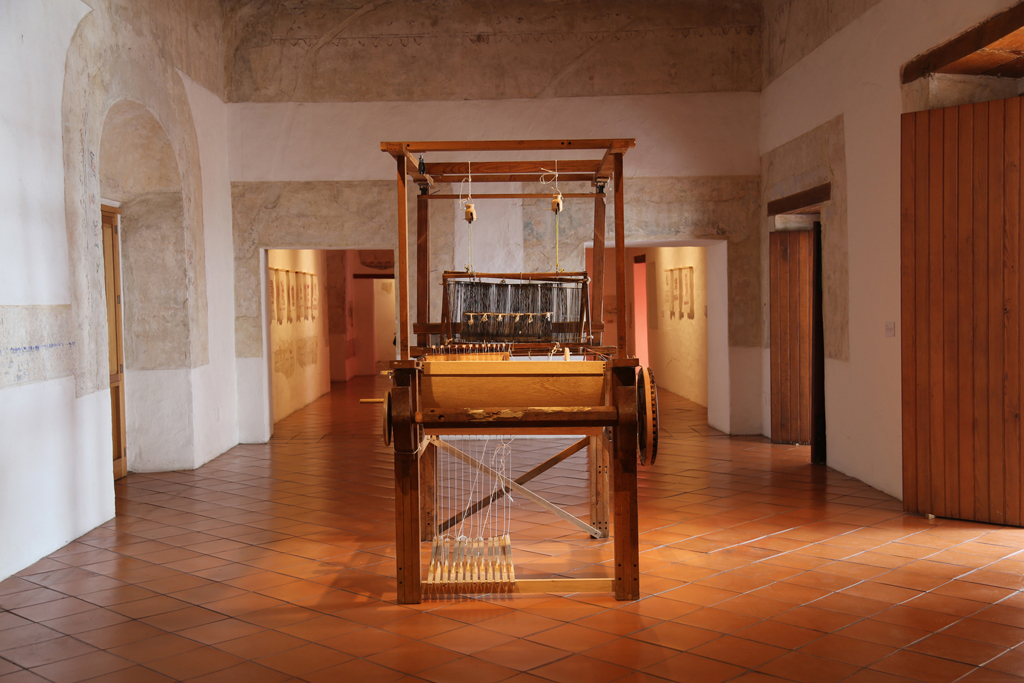

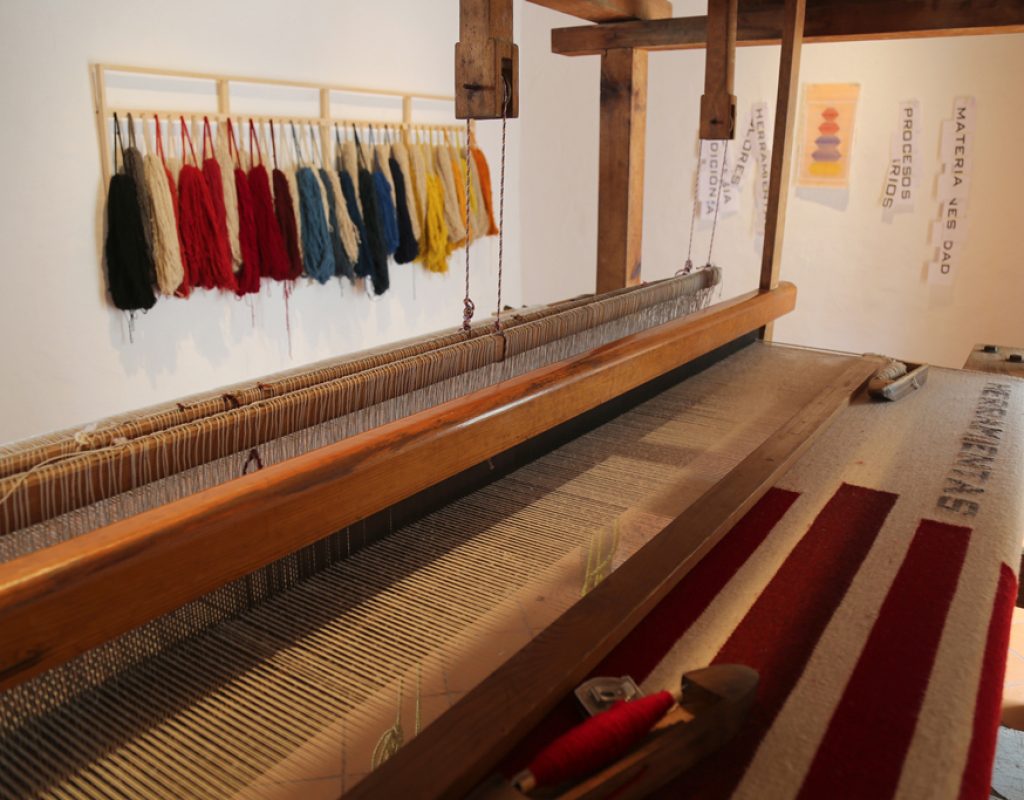
Three colors
Data
DETALLES DEL PROYECTO
Cromática
Sound action with looms recorded on video, that was made during the inauguration of the Cromática exhibition at the Museum of Contemporary Art of Oaxaca on August 14, 2015, where the weavers Marison García, Tomás Mendoza and Ernesto Mendoza, from Teotitlán del Valle, wove with their looms using the three colors of this project.
Colores primarios
This work is about a loom made in the 8th workshop of Teotitlán del Valle. The weaver Juan Pérez Martínez was making the tapestry in front of the public during the exhibition in the same museum, where the scheme is shown with the key concepts that generated the corpus of the display. The wool threads were woven in the workshop of teacher Magdalena García.
Colores antiguos
This work consists of a series of ink injections on cinnabar paper: Hermatites, Red Ocher, Ercolano Red, Venice Red, Azurite, Indigo, Lazuli Pencil, Citrine, True Naples Yellow, Limonite, Golden Ocher, Ocher Jaune, Ocher Dark Yellow, and Oropimente.
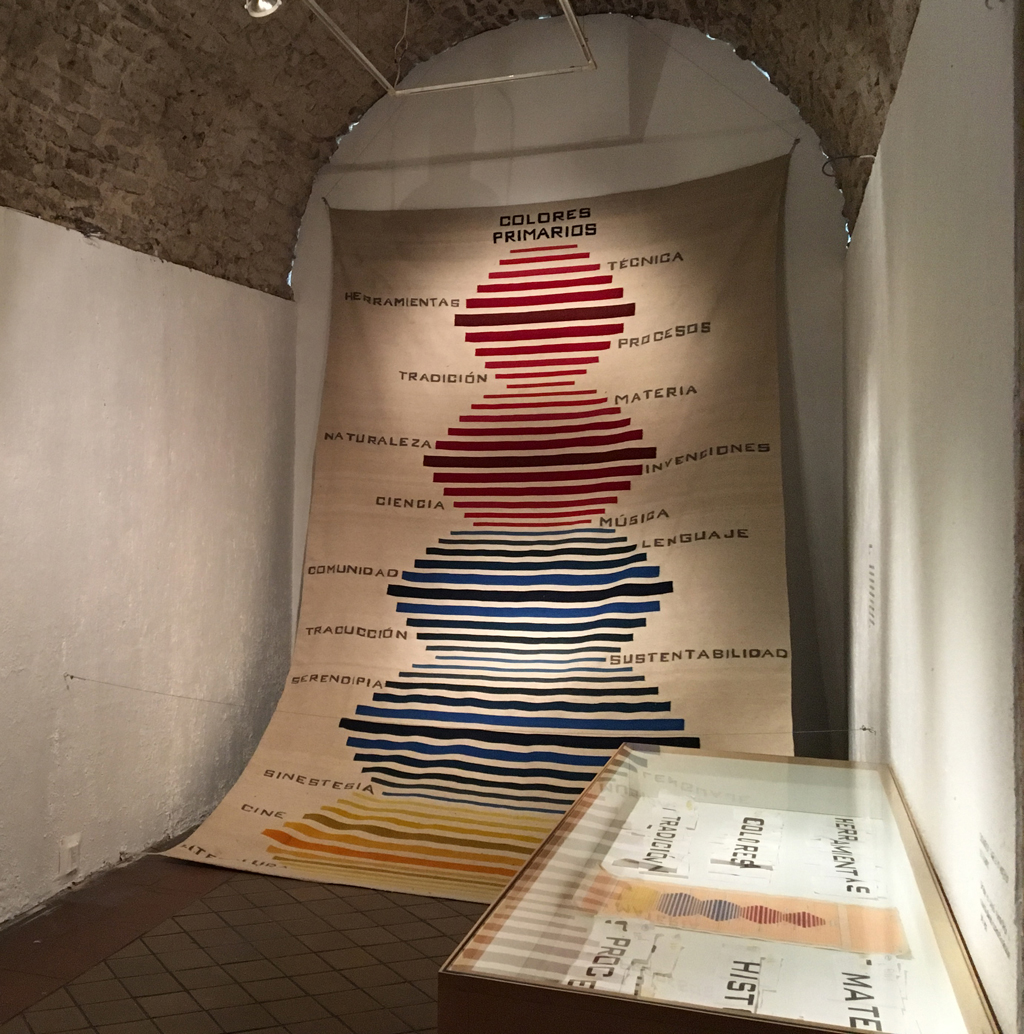
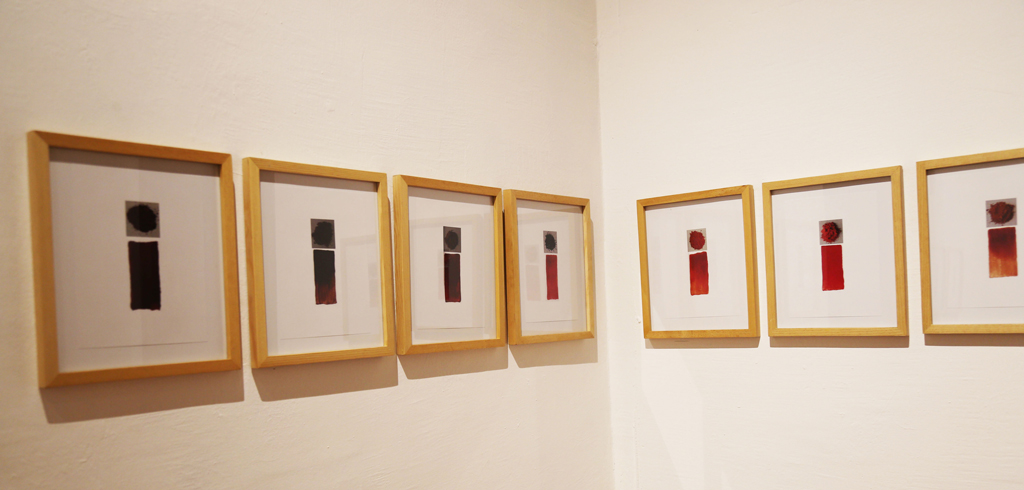
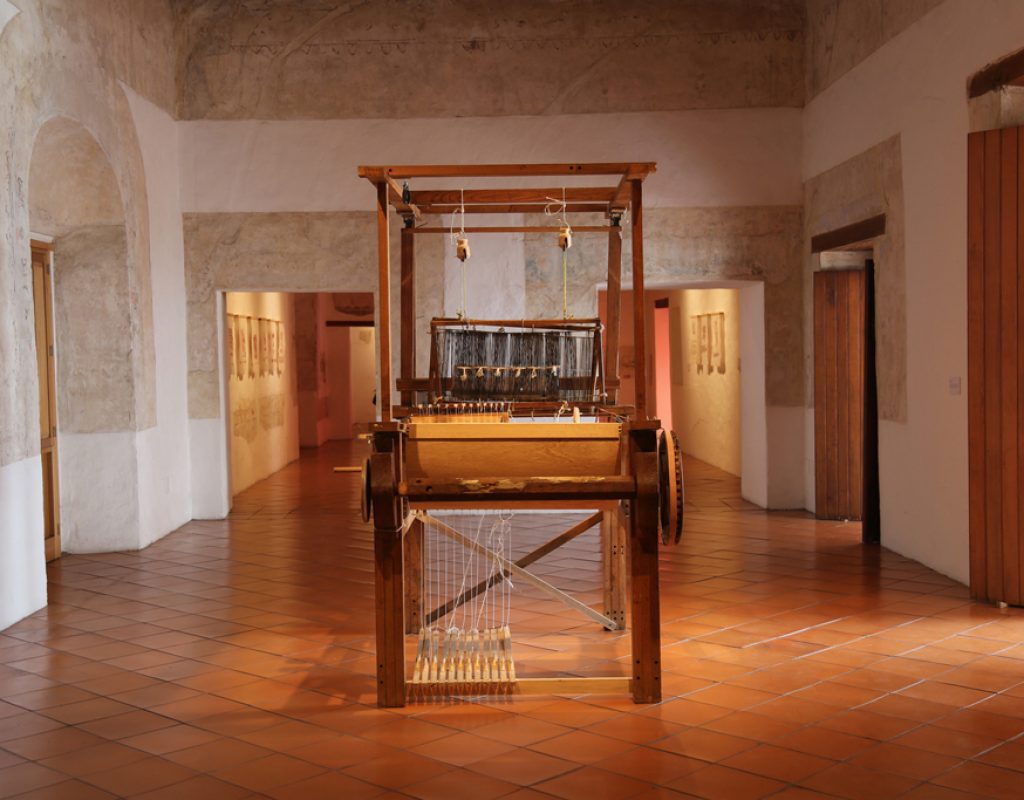
Synesthesia
Labels
DETALLES DEL PROYECTO
Zanfona
This work is an old loom transformed into a string instrument by Saúl Moisés Revilla and Jesús Ramirez Ortiz, from workshop Inti of Laudería de Oaxaca, whose model is based on an ancient musical instrument from the 14th century, the zanfona. In Zanfona, the function of the continuous friction of strings with the essential operation of the loom has been made to coexist.
Recetas
This work consists of recipes written with ink on paper.
La carda
This installation was made in collaboration with Beto Ruiz and is composed of carded wool and sound. It is accompanied by a video.
El Anuncio
This video is the record of a loudspeaker made in San Baltazar Chichicapampara summoning wool producers.
Flores del Itsmo
Video installation of two channels on a pictorial abstraction from the embroidery of the Istmo of Oaxaca, pieces from the 40s, 50s, and 60s of the collection of the master Remigio Mestas.
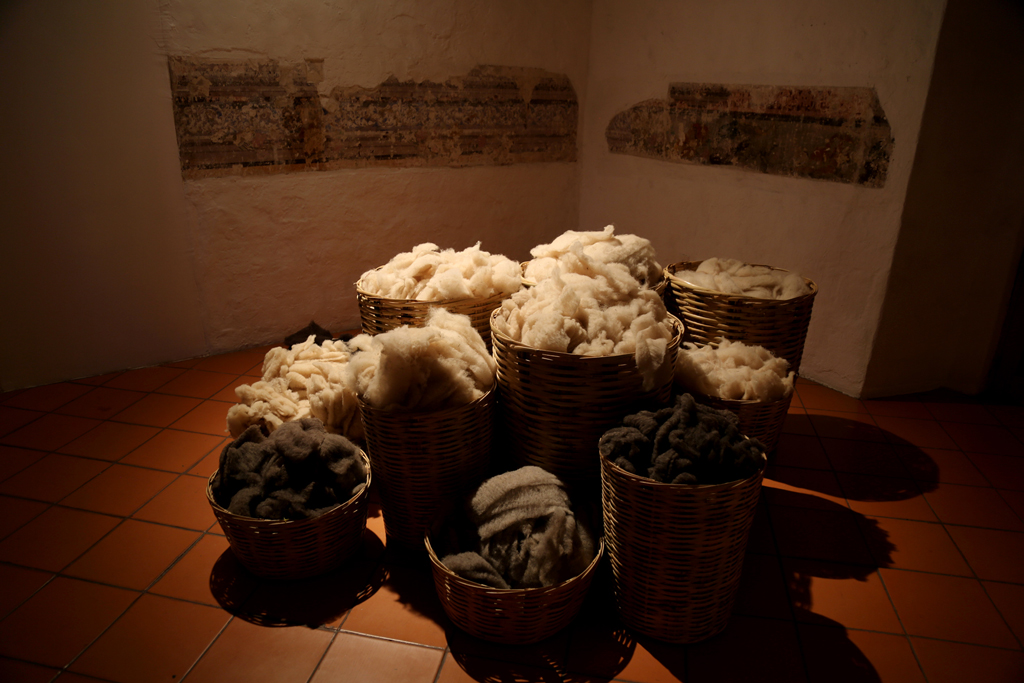
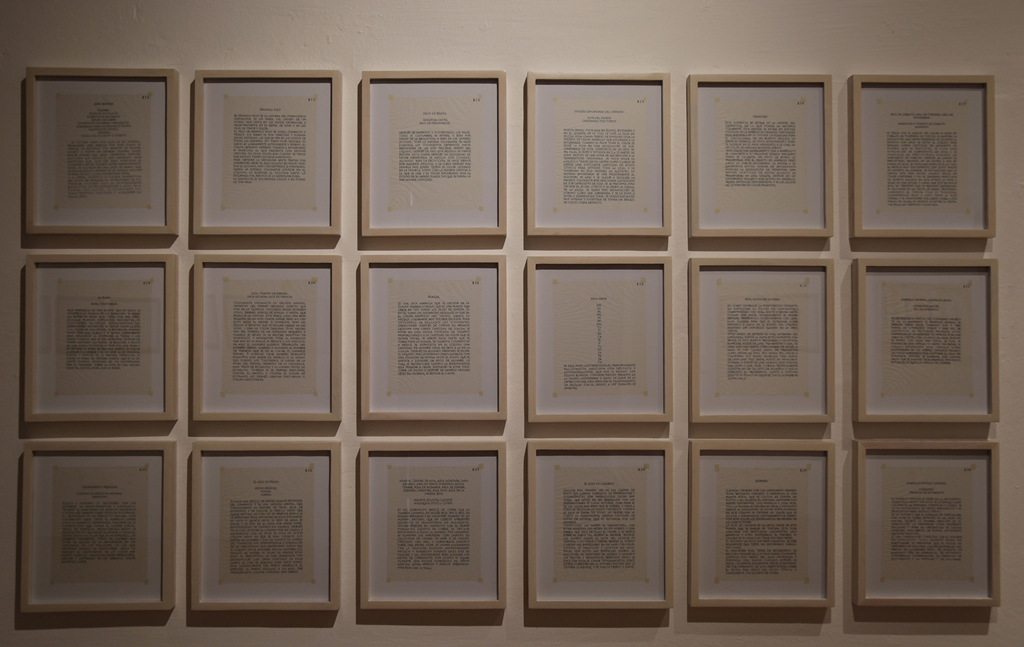

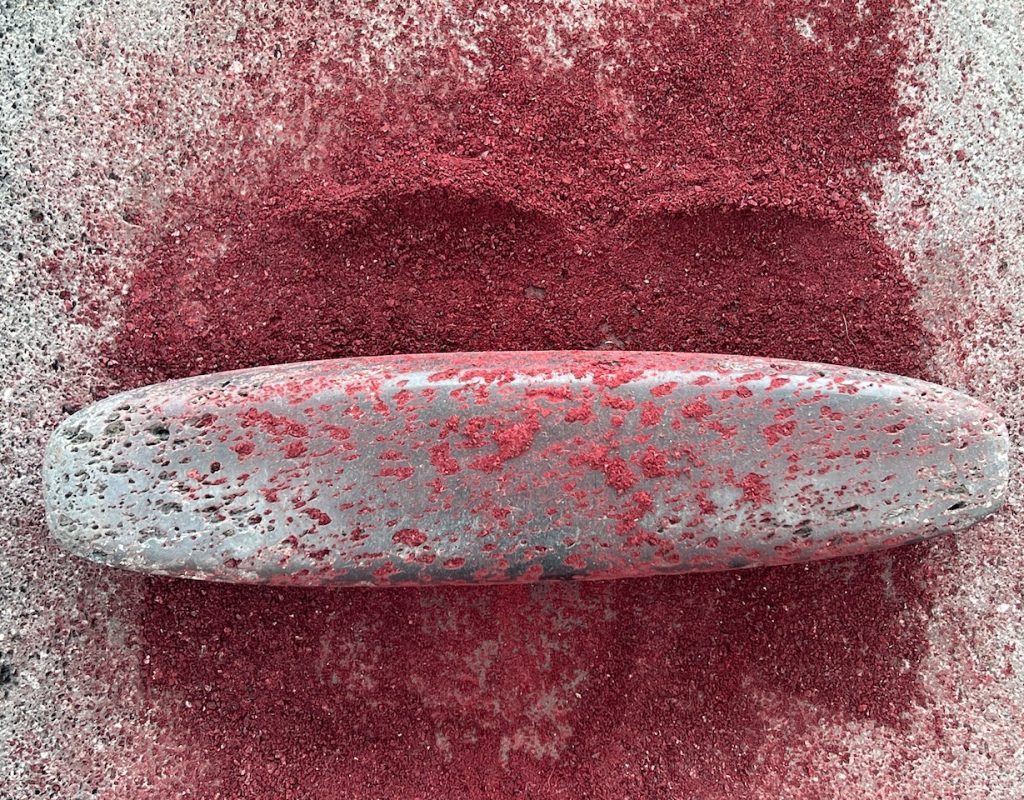
Red
DETALLES DEL PROYECTO
La Molienda
La Molienda (The Grinding), 2015 – 2022. Installation and Performance, 18 old stone metates, grana cochineal ground and HD video. Variable measures
A group of women grinds cochineal on metates, leaving the pigment as a record of the performative action. The sound of that task becomes the protagonist. The grana, called in Nahuatl nocheztli (blood of tunas), was used both for staining ceramics and textiles, as well as for writing and drawing on murals and amate paper. The cochineal is an insect domesticated in Mexico that lives as a parasite on the surface of nopales, from which the dye is extracted.
The presence of the pigment in this piece evokes the commercial exchange that was made with it in colonial times, the exploitation of the territory and the political and resistance force that the rescue of this raw material represents.
Beneficio de la grana cochinilla
Beneficio de la grana cochinilla (Benefit of grana cochineal), 2015. Series of ten cross stitch embroidery with thread dyed with scarlet. Variable measures
This work is composed of a series of cross-stitch embroidery with thread woven with grana pigment. The embroidery was made by María Santiago and is based on the illustrations of the book by José Antonio Alzate of 1794 “Beneficio de la grana cochinilla” (Benefit of the cochineal grana).
Nocheztli
Nocheztli, 2015. Installation with prickly pear cactus infested with cochineal and red wall. Variable measures.
Installation from 800 pieces of prickly pear cactus infested with cochineal. The fine grana were called in Náhuatl “nocheztli”, a word that means the blood of tunas, and was used to dye ceramics and textiles as well as to write and draw murals and amate paper. In Zapotec it is called “bee”, and in Mixteco “nduco”.
The fine cochineal (Dactylopius Coccus Costa) is a domesticated insect in Mexico that lives as a parasite on the surface of nopales, and has been cultivated since pre-Hispanic times for the production of the scarlet, red dye very quoted for its multiple uses in the dyeing of textile fibers, the food industry, in cosmetics, among other methods. It is grown for periods of 80-90 days, and its life cycle begins when the egg comes out a small larva and sits on a prickly pear cactus and goes through several stages of development.
The dye is extracted from the adult females, whose nymphs are fixed on one side of the stalk, where they remove the juices from the plant. For the production of scarlet requires intensive and careful cultivation of fine grana that involves cleaning, selecting and collecting by hand the insects.
The ones used in this installation come from the Center of Dissemination for the Knowledge of the Grana Cochinilla Tlapanocheztli, by maestro Manuel Loera.
Acerca del rojo
Acerca del rojo (About red), 2015. Hand embroidery over cotton on wood hoops. Variable dimensions
A series of hoop embroideries with phrases related to the color red.
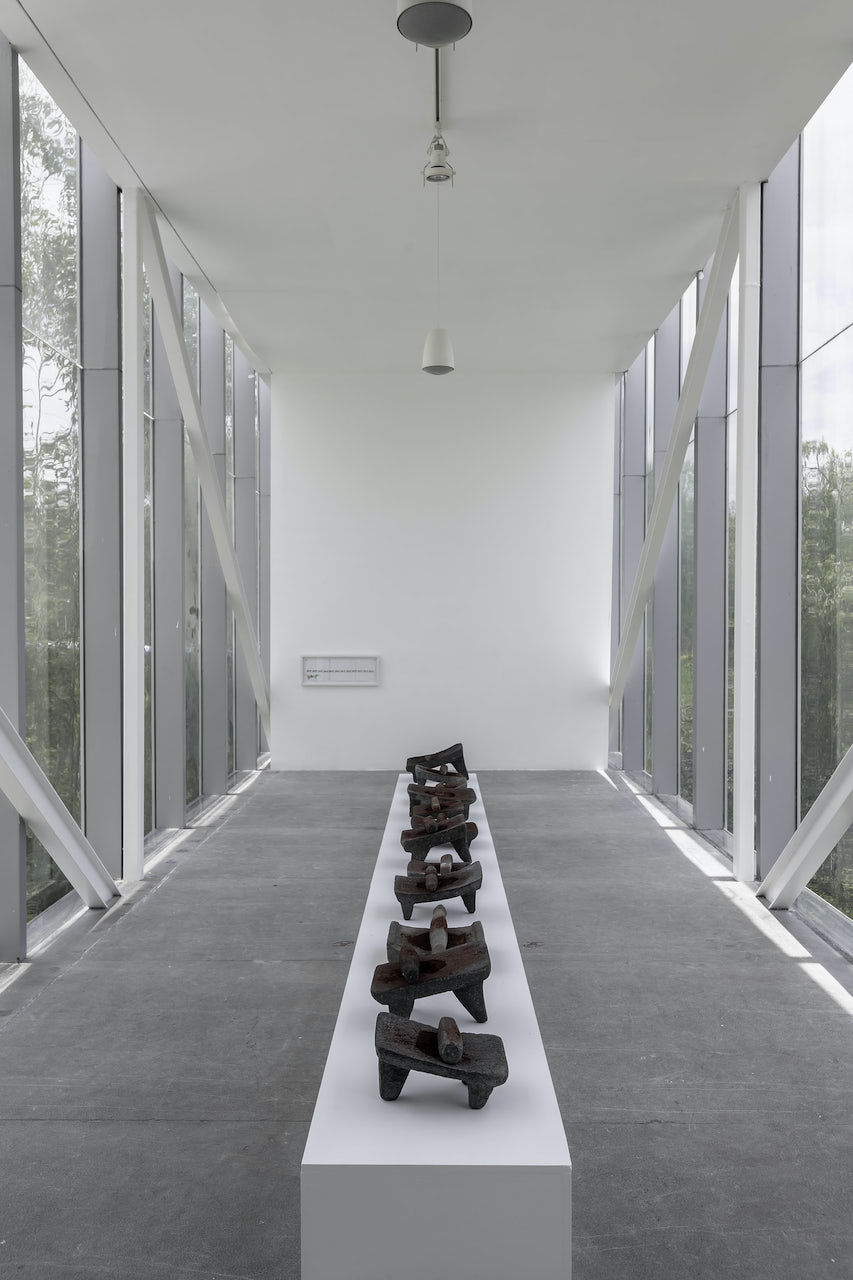
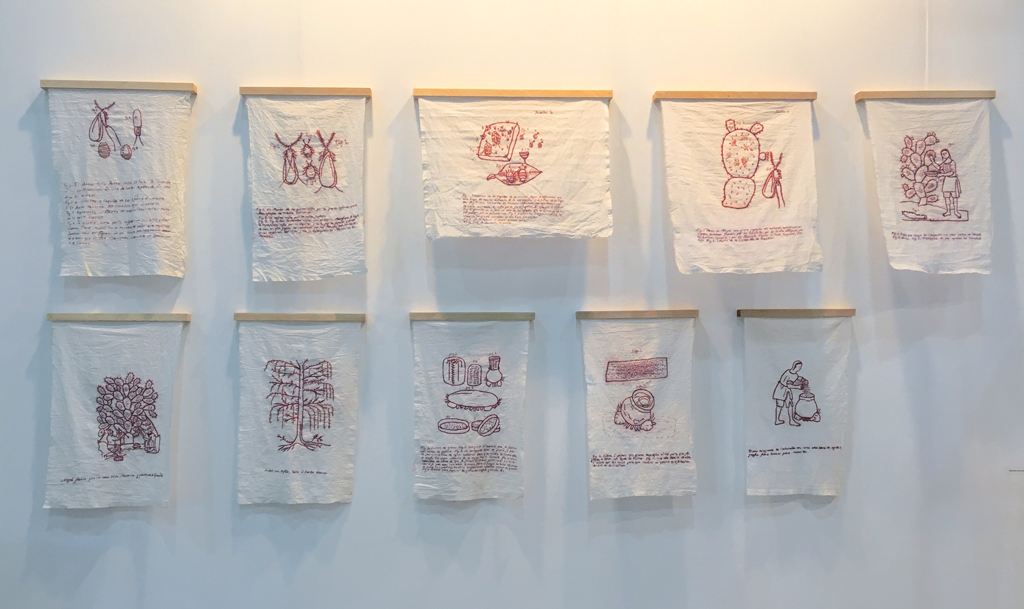

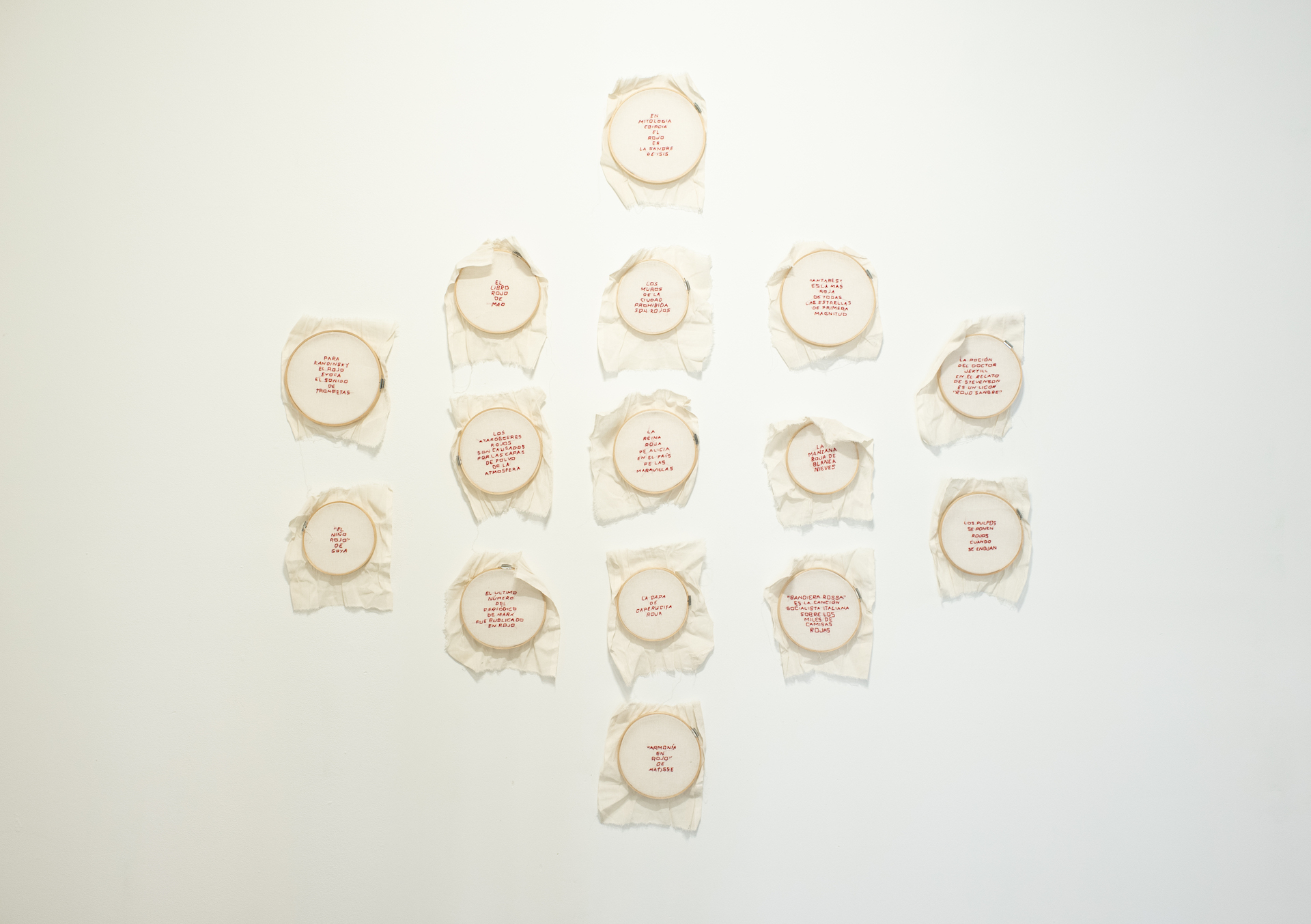

Blue
Labels
DETALLES DEL PROYECTO
Acerca del azul
A series of hoop embroideries with phrases related to the color blue.
Donde nace el azul
This video piece is about a visit to Niltepec where the Maestro Octaviano shows one of his plots of jiquilte and time is not proper yet, and the plague begins to manifest. The expected rains have not arrived, nor has the sun warmed enough. If time is not right, blue will not be born of that greenness.
La Urdidumbre
A wooden warp sculpture with threads woven of indigo blue that was activated in the Museum of Contemporary Art of Oaxaca by the master Virgilio García, of how the threads are prepared to be woven. On the other hand, this work is also composed of a video recorded in the workshop of Maestro Fernando Martínez.
Las pilas del añil
Installation of cement piles for the manufacture of indigo blue. The blue indigo is obtained after processing a plant of the genus Indigófera known as jiquilte. For extraction, the technique of the three piles is used. The plants are placed in the first pile and covered with river water overnight, the plant “boils” in the fermentation process. Once the fermentation process has finished, it is drained to the second pile, using the so-called “oars” the liquid is blown to force its oxidation and a fruit called gulavere is added, which completes the process. When the foam acquires the desired blue tone, the liquid is drained to a third cell where the pigment is finally collected. In this video, Octaviano Pérez Antonio performs the pigment production process on site, once the weather is favorable and the plant is ready.
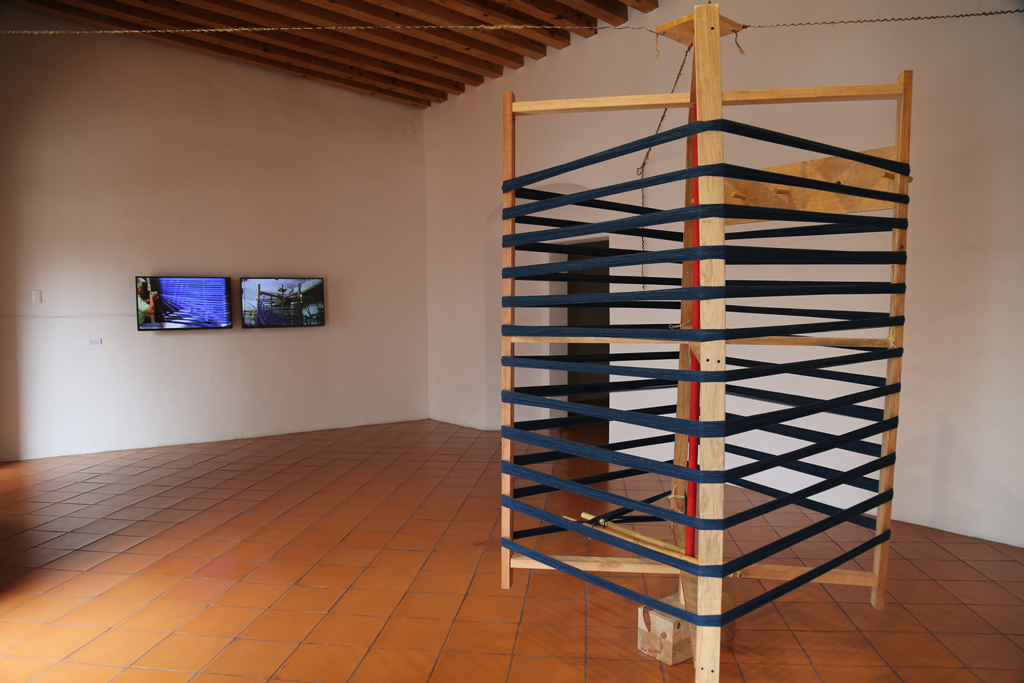


Yellow
Labels
DETALLES DEL PROYECTO
Acerca del Amarillo
A series of hoop embroideries with phrases related to the color yellow.
Ocarinas amarillas
Sound installation of 16 bird-shaped ceramic ocarinas in 16 shades of yellow, made by the Coatlicue workshop of the Martínez family, Santa Maria Atzompa, Oaxaca. The size of the birds determines the tone of the sound.

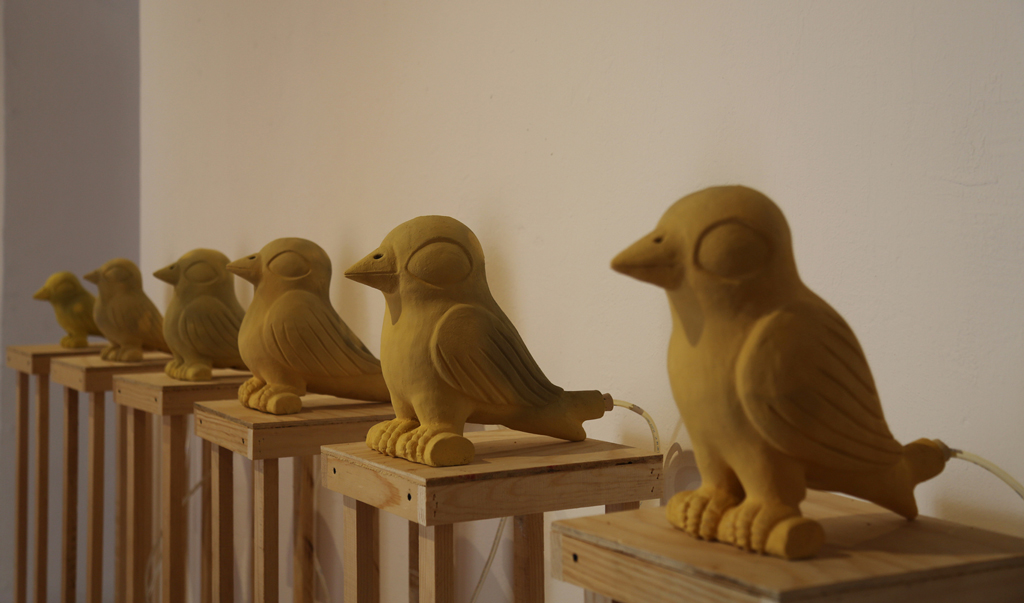
DETALLES DEL PROYECTO